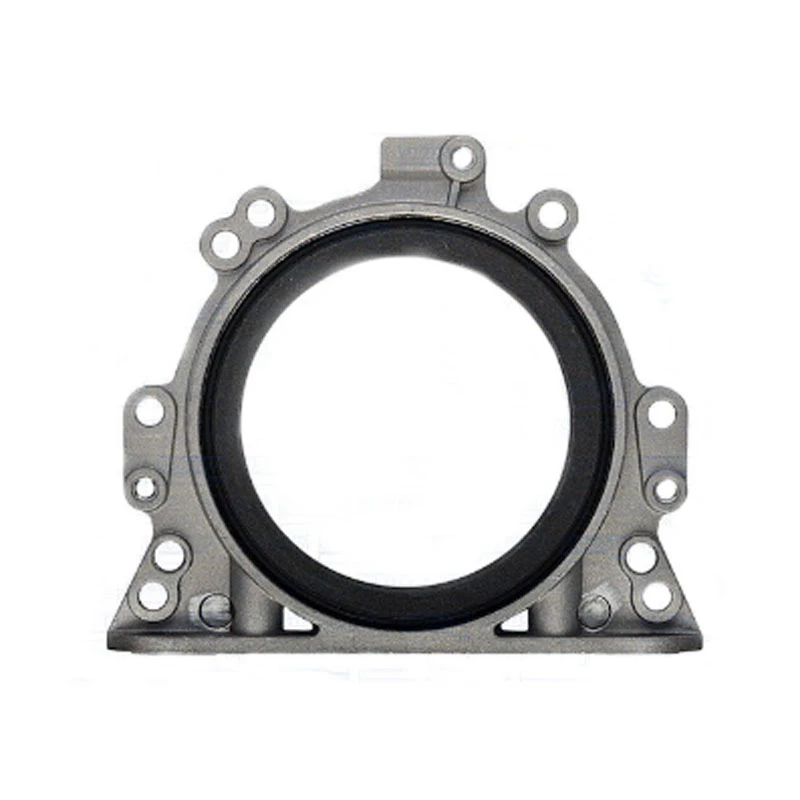Understanding Automotive Oil Pan Gaskets and Their Importance in Engine Performance
Understanding Automotive Oil Pan Gaskets
In the complex world of automotive engineering, every component plays a vital role in ensuring the smooth functioning of a vehicle. One such critical component is the oil pan gasket. Often overlooked by many car owners, the oil pan gasket can be fundamental in maintaining the overall health of an engine. This article delves into the importance of oil pan gaskets, their functions, common issues, and maintenance tips to keep your vehicle running smoothly.
What is an Oil Pan Gasket?
The oil pan gasket is a sealing component that sits between the oil pan and the engine block. It is designed to prevent oil leaks and ensure that the engine oil remains contained within the oil pan. Typically made from rubber, silicone, or cork, these gaskets must be flexible and able to withstand the high temperatures and pressures found within the engine.
The Role of the Oil Pan Gasket
The primary function of an oil pan gasket is to create a tight seal that prevents engine oil from leaking out of the oil pan. The oil pan itself is crucial as it holds the engine oil, allowing it to circulate through the engine lubricating critical components such as bearings, pistons, and camshafts. A properly functioning oil pan gasket ensures that there is adequate oil pressure within the engine, which is essential for optimal operation.
In addition to preventing leaks, the oil pan gasket also helps to isolate the oil pan from engine contaminants. By maintaining a secure seal, the gasket keeps dirt and debris from entering the oil supply, which can lead to a host of problems including increased wear on engine components and reduced efficiency.
Common Issues with Oil Pan Gaskets
Over time, oil pan gaskets can wear out or become damaged, leading to leaks. Several factors can contribute to gasket failure, including
1. Age and Wear Like any other component, oil pan gaskets are susceptible to wear over time due to exposure to heat, oil, and various contaminants.
automotive oil pan gaskets

3. Excessive Engine Vibration High levels of engine vibration can cause stress on the gasket, leading to cracks or tears.
4. Overtightening Bolts When installing an oil pan, it is crucial to follow the manufacturer's specifications for bolt torque. Overtightening can distort the gasket, leading to premature failure.
Signs of a failing oil pan gasket include visible oil spots under the vehicle, a decrease in oil levels, or the presence of oil on the engine block. If you suspect an oil pan gasket issue, it's advisable to have it inspected and replaced promptly to prevent further engine damage.
Maintenance Tips
To ensure the longevity of your oil pan gasket, consider the following maintenance tips
1. Regular Oil Changes Changing your engine oil regularly can help prolong the life of the oil pan gasket. Fresh oil reduces the buildup of sludge and contaminants, minimizing wear on the gasket.
2. Monitoring Oil Levels Keep an eye on your oil levels. A steady decrease in oil could signify a leak, which may require gasket replacement.
3. Professional Inspections Regular inspections by a qualified mechanic can help catch any issues before they become serious. Mechanics can check for signs of leaks and assess the condition of the oil pan gasket during routine maintenance.
4. Follow Manufacturer Guidelines Always adhere to the manufacturer’s recommendations for oil changes and maintenance schedules. Using the right type of oil and ensuring proper installation of components can significantly reduce the risk of gasket failure.
Conclusion
The oil pan gasket is a seemingly small component that plays a crucial role in the overall health of your vehicle's engine. Understanding its function, common issues, and maintenance requirements can help you keep your vehicle running smoothly for years to come. By prioritizing regular maintenance and addressing any signs of trouble early, you can prevent costly repairs and ensure that your engine continues to perform at its best. Remember, a little attention goes a long way in automotive care!
-
Simplifying Oil Changes: A Comprehensive Guide to Oil Drain Plugs and Their Variants
News Aug.04,2025
-
Mastering Oil Drain Maintenance: Solutions for Stripped, Worn, and Upgraded Oil Plugs
News Aug.04,2025
-
Fixing Oil Pan Plug Issues: Leaks, Stripped Nuts, and the Right Replacement Solutions
News Aug.04,2025
-
Everything You Need to Know About Oil Drain Plugs: Sizes, Fixes, and Upgrades
News Aug.04,2025
-
Choosing the Right Oil Drain Plug: A Guide to Sizes, Materials, and Drain Innovations
News Aug.04,2025
-
A Complete Guide to Automotive Drain Plugs: Types, Problems, and Innovative Solutions
News Aug.04,2025
-
The Ultimate Guide to Car Repair Kits: Tools and Essentials Every Driver Should Own
News Aug.01,2025
Products categories















